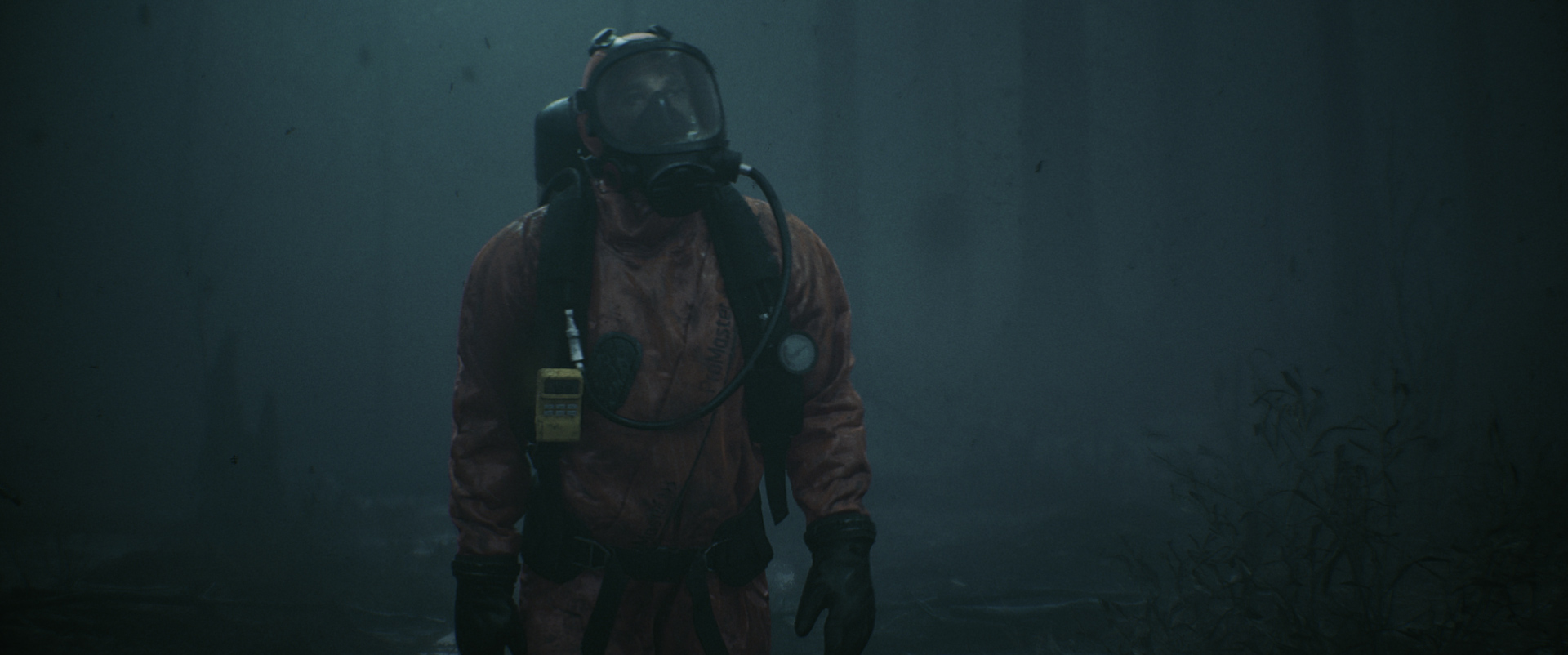Did you know that Jon Favreau “shot” the latest Lion King in VR? That the reason The Mandalorian is able to produce such epic landscapes on a TV production timetable is that it is filmed in front of a giant LED screen which adapts to the camera in realtime? Oh, you did. Disney is the biggest name in entertainment and never suffers from a lack of publicity, so it makes sense that you’ve encountered one of the many trend pieces that describe the emerging field of “Virtual Production” and how it is a “gamechanger” and “the future of filmmaking“.
You may know this, but it is one thing for these bleeding-edge tools to be in the hands of creators at multi-billion dollar studios, what you might not know is how close we are to their adoption by the rest of us.
Today’s short is truly a fascinating glimpse at the current state of play. From acclaimed VFX artist Sava Zivkovic, Irradiation is a 9min mood piece that crosses sci-fi horror with “Chernobyl”-inspired imagery, creating a heady CG animated short long on atmosphere and menace. Many of the usual hallmarks of a sci-fi proof-of-concept apply here: detailed, photo-realistic characters that might trick more than a few of you, terrific motion, cinematic direction, and detailed environmental worldbuilding are all featured. What is even more notable than the end product though is how it came together; both its workflow and the film’s status as a personal passion project.
Using a realtime game engine, a motion-capture facility, and off-the-shelf visual assets, Zivkovic creates a million-dollar-looking animation largely by himself. Irradiation is great, but it’s not terribly dissimilar from work we see all around us—in movies and TV, or advertising and gaming. However, as recently as a couple of years ago, you’d expect work of this quality to require at least a small studio and/or for it to take months of labor. Instead, Zikovic produced Irradiation in 4 weeks in a manner more akin to an indie guerrilla shoot.
Such is the power and promise of Virtual Production, and the possibilities are tantalizing. Sorry to gloss over the film itself somewhat—the dread that its atmosphere produces, and its exploration of the thin edge between reality and surreality is powerful and effective—but, like many sci-fi teaser short films, it is narratively thin. While this type of short film is exceedingly popular online, we always get a fair bit of pushback in comments and on social when we feature them, with viewers accusing us of betraying our curatorial commitment to innovative storytelling. If you’re one of these people, be aware that Irradiation is likely not for you.
I don’t subscribe to this line of thinking though, as concomitant to our site’s narrative focus has always been a dedication to the story of how technology is shaping storytelling. While not the first short film we’ve featured to employ the realtime power of Unreal Engine, and Kevin Margo (Grounded) was pioneering many of these techniques 3 years ago in his short film CONSTRUCT, Zikovic work is the first to clearly demonstrate the democratizing potential of the technology, and for me, point to a future where these tools could be employed outside of the hands of experienced VFX professionals.
For those who are not of a technical background struggling to grok the implications of virtual production for indie filmmaking I highly recommend Zikovic’s process video embedded above. It is longer than the film, but an expert piece of storytelling in its own right, as Zivkovic narrates his personal journey with the tools. I’m one of these non-experts, so forgive my fumbling attempts to relay the gist, but what’s intriguing to me about Virtual Production is the playfulness and spontaneity it enables. Traditional CG animation is very rigid—immense amounts of work are made to block out shots and lock action early in the production and then the images are refined in post. Using a tool like Unreal Engine requires a great deal of work upfront in rigging the characters and designing environments, but once created, you’re empowered to design your shots and edit at the speed of thought, moving a virtual camera around the 3D environment with complete freedom.
This sort of workflow rewards creators from non-animation disciplines. Zikovic, in his process video mentions how motion-capture weirdly privileges the performing arts because you’re directing actors on a stage and how the freedom of real-time rendering and environments unlocks the traditional skills of photographers and cinematographers. With a virtual monitor on set, feedback on performance can be communicated at the point of capture and the blocking of shots can be discovered in the computer.

The photo-realistic characters in Irradiation will likely trick a few viewers into thinking they’re watching live-action.
This is not to conclude that the filtering down of these tools makes them easy—Zivkovic is a professional with deep industry experience. After graduating in 2012 with a degree in Interior and Furniture Design from Belgrade University of Arts he shifted to moving images and has produced an impressive body of work in the CG and VFX industry. He currently is a director at Axis Studios, helming cinematic trailers for high-profile AAA games like Gears of War 5 in addition to a slew of acclaimed personal projects. I first encountered his work in 2017 via his title sequence for IFCC, and those, along with his work for Playground Berlin in 2018, deserve mention on the shortlist of best titles of the past decade. He’s emerged as a thought-leader on the conference circuit and, as a huge fan of Love Death + Robots, is currently developing his own limited animated series with a team based out of Belgrade.
But the nature of new technologies is to filter ever further down, so while Zivkovic is skilled enough to have produced Irradiation via a traditional workflow, it doesn’t change the fact that the advantages of realtime feel imminently obtainable by many more. The characters, vehicles, and buildings in Irradiation are stock assets from the company BIG MEDIUM SMALL, you can license them for under $400. Motion-capture feels fancy, but small emerging studios like Take One in Belgrade are popping up in cities worldwide. These facilities are always eager to boost their credentials with artistic creative projects, and it won’t be hard to secure a good deal if your film is exciting. If revenue from your project is under $1M, Unreal Engine is completely free.
We are living in a golden age for the short film medium, at least in terms of worldwide participation. This unprecedented accessibility is at the forefront of the long-needed shift to diversifying the industry as a whole and it is a success story best understood as one of technology. Like innumerable other pursuits, the tools of filmmaking have continually gotten better, easier, and cheaper. I remember the excitement when non-linear editing on consumer computers arrived, and DSLRs, which provided interchangeable lensing to the masses, are younger than this site. The ability to stream HD video worldwide was, in 2010, such a novelty that it laid the groundwork for Vimeo to become a $5B company. What happens to animation when the type of plug-and-play processes and creative freedom Zivkovic expresses in his process video is in the hands of teenagers? When Virtual Production gets the iMovie treatment? What happens to cinema? It is exciting stuff to contemplate.

 Jason Sondhi
Jason Sondhi